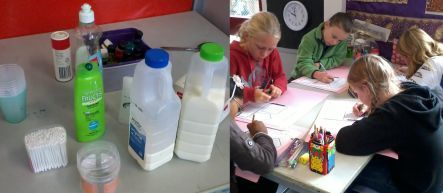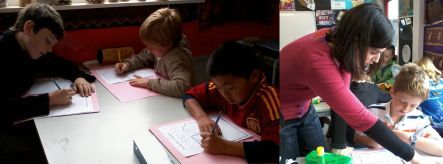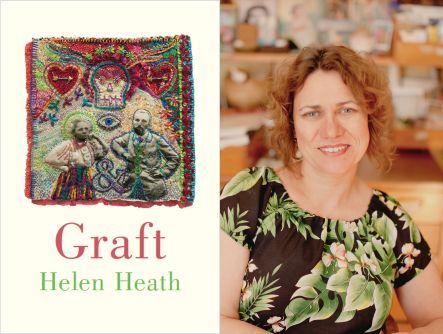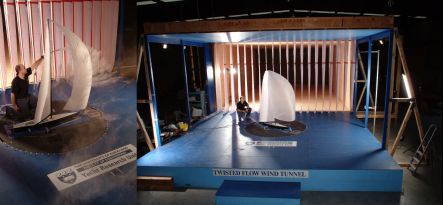Our Changing World for Thursday 17 May 2012
Primary Science Teaching

Many primary science experiments can use everyday ingredients such as these ones for tie-dyed milk, and students are encouraged to write up the experiment and their results (images: A. Ballance)
A recent Education Review Office report on science teaching in years 5 to 8 raised concerns about the high proportion of primary schools failing to teach science effectively. There are, however, a number of initiatives that are trying increase teacher confidence, and stimulate science in the classroom. Last week, for example, was the second National Primary Science Week, and Alison Ballance caught up with the South Island co-ordinator Chris Astall to find out how the week came about, what the nationwide science experiment involves, and how the Association of Science Educators hope the week will encourage a wider science focus through the rest of the year as well. Alison also spoke with Richard Meylan from the Royal Society of New Zealand about their ‘Advancing Primary Science’ initiative, which aims to address the lack of teacher confidence in teaching science.
To see primary science in action Alison headed to Eastern Hutt School to see teacher Kerry Harrison and the young scientists from her Science Club. Kerry Harrison had a Royal Society of New Zealand Primary Science Teacher Fellowship in 2010, and spent 2011 teaching science throughout Eastern Hutt School, before returning to classroom teaching this year. Kerry runs a Science Club for Years 5 and 6, and Alison joins the club as they carry out their own tie-dyed milk experiments.

Eastern Hutt School's Science Club targets keen years 5 and 6 to extend their science learning, and is run by teacher Kerry Harrison (images: A. Ballance)
Composites

Mark Battley, the laboratory, and the drop testing machine
At the Tamaki Campus of the University of Auckland, composite materials are being made and tested. Composites combine two or more materials with very different properties into a new material that has superior qualities and better performance than the two materials separately.
Mark Battley is the Deputy Director of the Research Centre for Advanced Composite Materials and he takes Ruth Beran on a tour of the laboratory to see what a composite material is, the differences between them, how they are made, and what’s involved in testing them.
Science and Poetry

Helen Heath's first poetry collection Graft is published by Victoria University Press. (image of Helen Heath: Kate MacPherson)
Graft Wellington poet Helen Heath launched her first collection Graft this month. Science is a big part of the collection and many poems are inspired by her growing up in a family of scientists. In this reading and interview for Our Changing World, we've focused on a number of biographical poems about scientists who changed the course of science and allowed their science to change the course of their lives.
Helen also reads ‘Making Tea in the Universe’, which won the inaugural ScienceTeller Poetry Award last year. Apart from writing, she is currently working toward her PhD, exploring how science is represented in poetry and how people intersect with technology.
Twisted Flow Wind Tunnel

David Le Pelley in the tunnel (images: Birgit Utech)
At the University of Auckland there is a Twisted Flow Wind Tunnel which simulates the flow of wind over yacht sails. Housed in a large warehouse, the wind tunnel has two large fans which sends air through twisting vanes over model yachts. These yachts can be moved to the correct angle to simulate full scale wind speed and the yacht speed can be calculated in real time. Clients come from all over the world to use the facility, with the results being used to help syndicates in the Volvo Ocean Race, Open 60 and America’s Cup. Ruth Beran meets Wind Tunnel Manager David Le Pelley who shows her how the tunnel works.